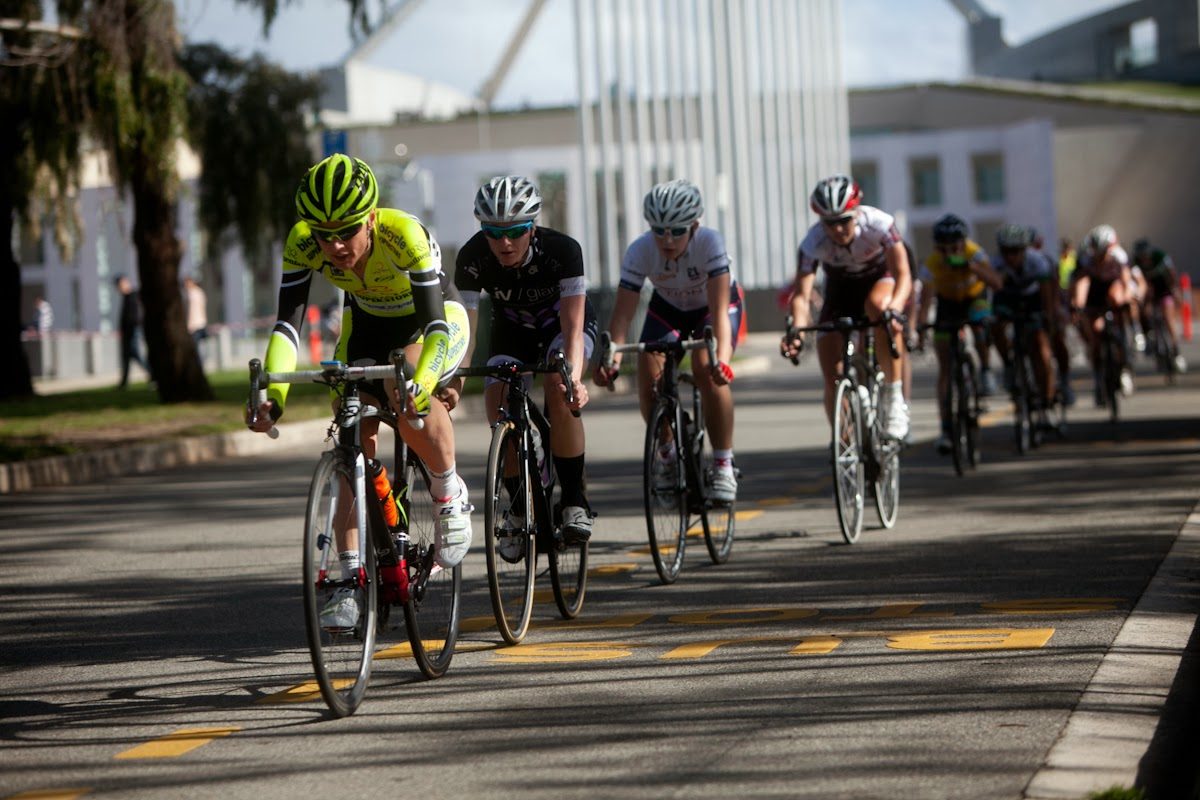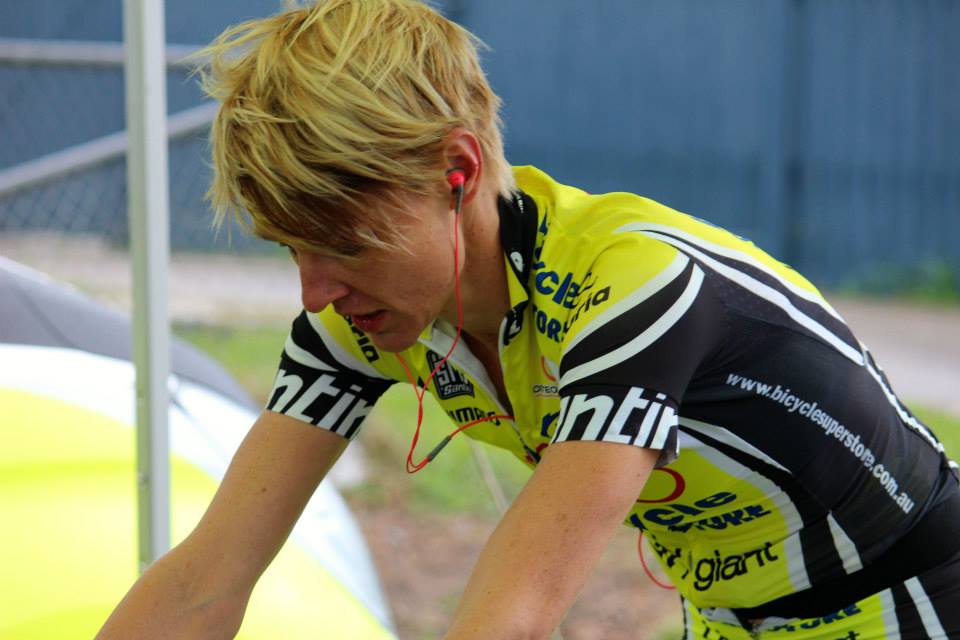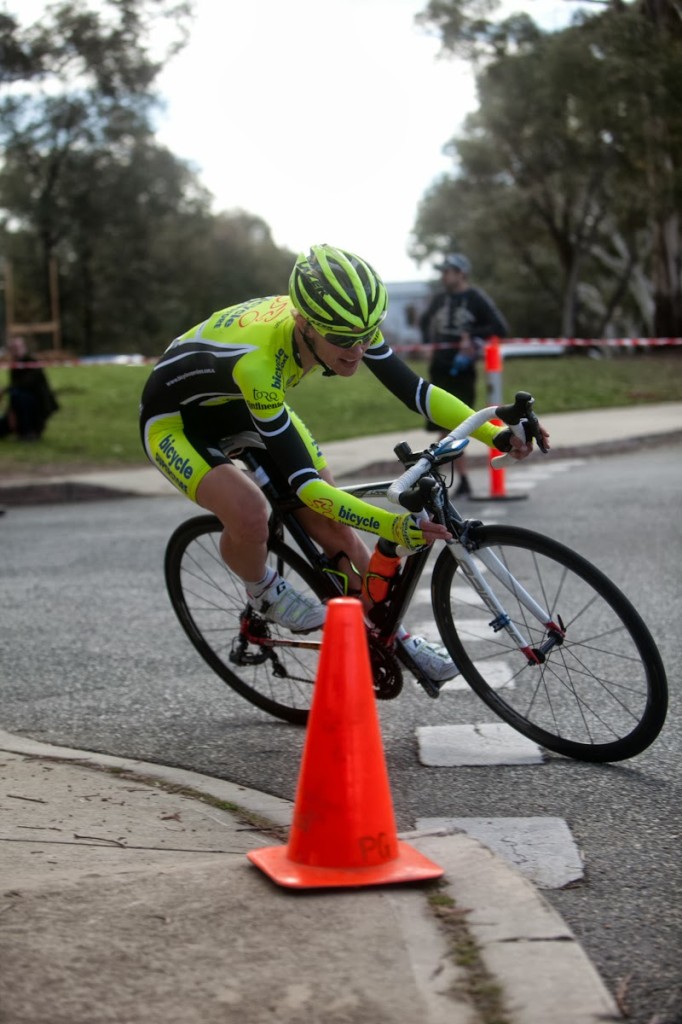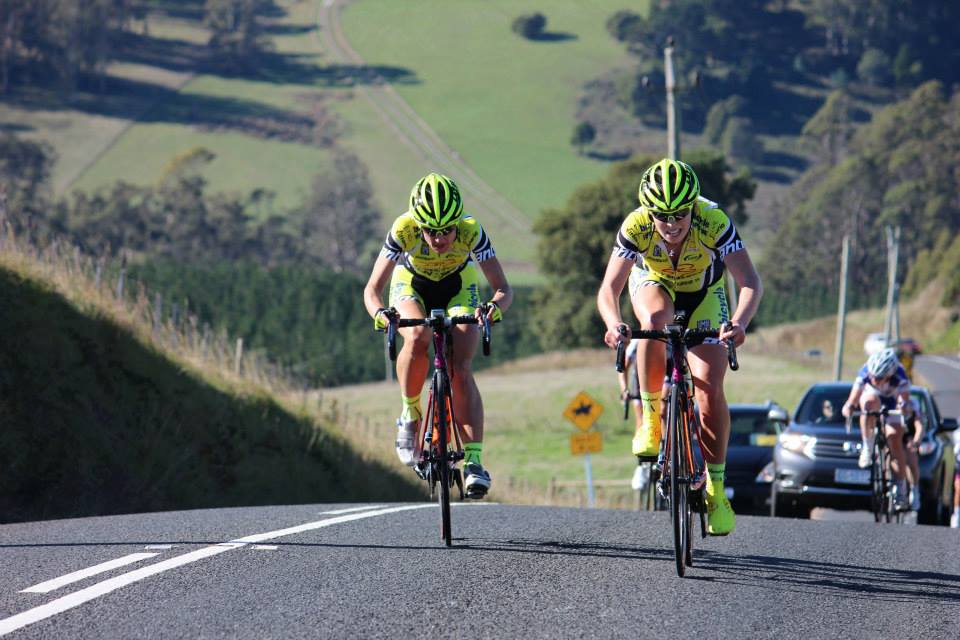
“I would like to do more with my cycling, I just don’t have the time/ability/motivation/knowledge/[insert other excuse] to make it happen”. As cyclists and human beings we often come up with excuses as to why we don’t do certain things, even though they might help us achieve our goals or improve our ability to do something we really want to be good at.
To find out how to cut the excuses and become better cyclists, we caught up with National Road Series rider Lisa Keeling. Lisa is 35 years old and lives in Canberra. She rides for the Bicycle Superstore Women’s Cycling Team and has been competing in the NRS since 2012. Moreover, Lisa is the mother of two young children and also maintains a professional career as a lawyer on a part-time basis. Lisa is a busy bee indeed, yet she is probably the fittest she’s ever been. What is Lisa’s key to getting the most out of herself? This article explores how Lisa became an elite athlete and identifies where you need to focus your attention if you want to become a better cyclist.
Lisa’s story
Lisa got introduced to the world of cycling when she was 28. A colleague convinced her to sign up for a charity ride from Canberra to Charlotte Pass in Kosciuszko National Park, New South Whales. Having never ridden a road bike before and with only three months to prepare, tackling 460 km over three days seemed like a big task. Lisa was afraid of being the weakest link, so she started training for the event straight away. She quickly discovered that she was a terrible bike rider, but instead of giving up she was determined to put as much as she could into her preparation. Before she knew it, she was training five times a week and loving it. Lisa also discovered a big cycling community full of interesting and fun-filled people. She quickly became hooked on cycling.
Soon after Lisa started cycling she found out that she was pregnant with her first child, which put her foray into cycling on hold. About a year after her daughter was born, Lisa started doing some triathlons to get back into the swing of things. Her triathlon coach told her to become a cyclist, which, according to Lisa, says more about her swimming and running than her ability on the bike. She started competing in local cycling races and events and became more hooked on cycling than ever before.
However, a few months later Lisa’s cycling career was put on hold by another pregnancy. Again, she was off the bike for about a year before she decided that it was time to get fit again. She signed up to the Tour of Bright with a friend who was also returning to cycling post-pregnancy. Unfortunately, three weeks before the event, Lisa was hit by a car. With a broken ankle and ligament and nerve damage in her legs, Lisa was unable to participate in the Tour of Bright. The accident made Lisa think twice about what she was doing. With a husband and two young children at home she realised that any serious accident would affect the whole family. As a result, Lisa gave up on cycling.
In the middle of 2011, preparations for the Tour of Bright were coming up again. A few of Lisa’s friends were putting together a training group for the event and convinced her to conquer her fears and give cycling a go once more. She decided that if she was going to do it, she would do it properly. Lisa started training six days a week and went from being absolutely terrified to loving her riding again.
In 2012 Lisa started doing NRS racing for the Boss / Nutrixxion Team. At the end of 2012 the team folded and Lisa was at a bit of a loose end. She decided to do the Tour of Bright as a solo rider, which proved to be a great decision. During the last stage of the Tour a rider from Bicycle Superstore (then TORQ / Bicycle Superstore) came up to her and said: “We want to speak to you at the end of the stage”. In early 2013 Lisa started riding for the Bicycle Superstore Women’s Cycling Team, and she has recently signed up for another season as the team co-captain.

Becoming a better cyclist
Lisa has managed to ascend to the elite ranks of women’s cycling in Australia despite starting her cycling rather late in life and having multiple disruptions to her progress. As cyclists we can all learn from Lisa’s story and her approach to training and racing. Here are our top ten insights from Lisa:
Get a coach
Every athlete who wants to take their sport seriously should have a coach to provide motivation, structured training, new challenges, advice, feedback and a push in the right direction when needed. Coaches have helped Lisa throughout her cycling career. Her triathlon coach essentially got her honed in on cycling and her cycling coach has given her the skills and fitness to continue that journey.
“A coach needs to have a thorough understanding of bike racing and the physical requirements of that, but they also need to be able to understand and relate to you as the rider, and figure out what your limitations are and how to motivate you,” Lisa says. “You also need to be prepared to give your coach feedback; the more feedback you give, the better your coach-athlete relationship will be, which will ultimately reflect in your overall enjoyment of riding.”
Find (the right) riding partners
Lisa’s friends and training partners have helped her immensely over the years. Her friends got her on a road bike for the first time, convinced her to try racing and motivated her to come back from two pregnancies and a serious road accident. “It took quite a few years of riding with friends to learn to enjoy the ride before I could even contemplate wanting to race. So for me, it was a lot of baby steps. Just give it a go and have a positive experience, which also means having a supportive network and lots of friends who can help you with it”.
Find a way to make cycling fit in to your schedule
When it comes to finding time to train and prepare for races, Lisa has to be more organised than most. With two young children and a career to look after, she still manages to fit in six training sessions per week. Lisa generally does her training in the early hours of the day and has the support she needs from her family and employer.
“I guess it all starts with a very supportive husband. He’s really happy for me to pursue the cycling. And he thinks it’s actually good for the kids to see. My work is also very supportive. They say if I need to take a two-hour lunch break to ride at lunchtime then just go and do it and start work a bit earlier or finish up later”.
Use your time wisely
Even with the support from her family and employer Lisa has no time to waste: “Having kids certainly makes my training more focused. I don’t waste any time. It’s like “Quick! I’ve got work to do.” Get out there, do it, and get home.”
Learn from others
Lisa’s quick rise in the ranks has a lot to do with her ability to lift the bar higher whenever she gets too comfortable. Throughout her cycling career she has gone up against riders who are stronger than her, which has forced her to lift her game. These days she likes to take on the opposite sex: “I actually really like racing against men, because it forces me to go that little bit faster, to punch it up one of the hills a little bit harder than in one of the women’s races. I really like having the opportunity to race against men in that regard because I think it forces me to push my limits.”
Training is not just about long rides
If you want to improve your cycling ability it’s worth spending some time focusing on specific aspects of your riding such as your cornering, sprinting, climbing, descending and acceleration as well as how you use your gears: “I say to people trying to get into cycling, it is worth investing time to develop skills to go with the fitness. I think the skills aspect is often forgotten.”
For Lisa, getting comfortable with your bike and learning how to handle it better is an important part of improving as a cyclist: “When I started, I had the worst bike skills in the world. I was also kind of terrified of the bike, having been hit by a car, and it did take me a long time to develop the confidence with the bike to know its limits and my limits.”
In her training, Lisa focuses on specific aspects of her riding which will improve her agility and confidence on the bike: “I’ll get someone to stand in a particular point and I’ll practice grabbing a bottle or a bag off them. I’ll do some technical stuff on the time trail bike, where I’ll be cornering on a time trail bike. How fast can I come in to a roundabout, for example, and turn the bike around?”

Find out what works for you
Whether it’s working on your cycling ability or finding the next piece of equipment, it is important to not take on every piece of advice from others as it can be completely overwhelming. Lisa’s advice is to listen to advice from people whose knowledge you can trust and then figure out what works for you (usually through trial and error).
“You have a lot of people trying to help with your skills, but it’s not necessarily what’s going to work for you. Just because someone said to do something in a certain way doesn’t mean you’re wrong if you do it a different way. There are a few people who I really do trust in this space – my coach in particular. It’s a matter of developing the filter and figuring out what you can actually trust because it can be really overwhelming getting into cycling.”
Value improvement over results
According to Lisa, the key to staying motivated and focused, is to focus on your own continuous improvement: “I think a lot of people get into the trap of just thinking about the result and why they’re not happy with it, as opposed to thinking about why they are happy with it, and how it reflects how far they’ve actually come as a cyclist. I think everyone needs to take stock and go: “Two years ago I couldn’t ride up that hill. I had to get off and walk, whereas now I actually rode up it. I might have come in last in that race, but I rode up that hill.” Set tangible goals.”
Work on your mindset to become a better rider
For Lisa, a big part of her development as a cyclist has come from developing her mindset. In order to constantly push her boundaries and expand her comfort zone, she has had to first get her thinking straight: “You’re not trying to hurt yourself, but in your training and your racing you’ve got to be prepared to hurt. But it’s also generally about pushing your boundaries. A couple of years ago, if I had to go over a narrow bit of road, a single lane bridge or something with a bit of a drop-off, I would have been so nervous about it, and I would have talked myself out of doing it. At some point you just have to tell yourself, “I have to do it”. And the next thing you know, it’s not a concern anymore.”

Mental toughness comes over time
If you don’t feel like you have the mental strength or focus to become the cyclist you want to be, don’t sweat it. According to Lisa, mental toughness develops if you just keep trying: “I don’t think it’s necessarily something that people have when they start. I think that a lot of people expect that if you don’t have it from the start, you can never develop it. A lot of my friends who I’ve cycled with over the years have always said, “No no, I don’t have it, I’m just not tough enough, I wouldn’t want to finish”. But I think, if they really tried they’d start to see that they can get better, if they just keep pushing.”
With these 10 insights from Lisa Keeling in your pocket you should be well-equipped to take your cycling abilities to the next level. If you want to know more about Lisa and the adventures of the Bicycle Superstore Women’s Cycling Team then click here.
Join the conversation! Please leave your comment below.





Good ol’ Collingwood Forever 😁😁😁🤣🤣🤣